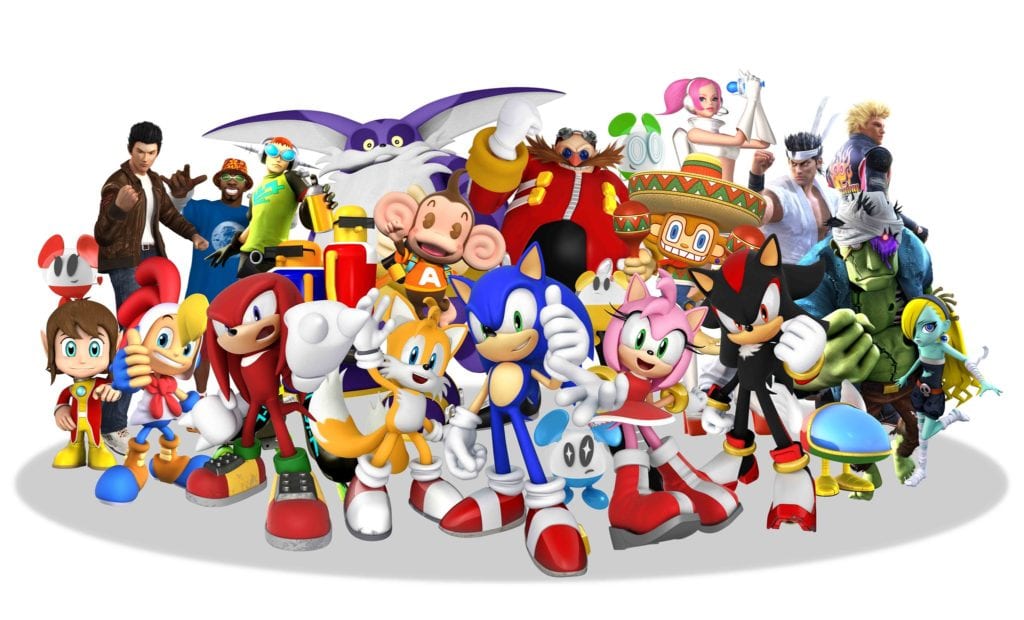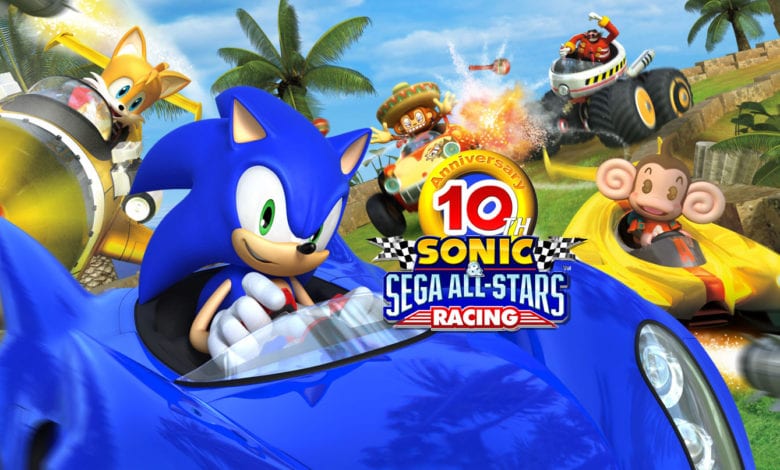
Feb. 23, 2020 marked the 10th anniversary of the release of Sonic & SEGA All-Stars Racing for the Xbox 360, Wii, Nintendo DS, PlayStation 3, Windows (via Steam), OnLive, Mac, iOS, Android, Blackberry, Java ME, your mother’s coffee machine, your grandfather’s pacemaker, and even arcades! (Okay, only two of those aren’t true — we’ll leave you to figure out which ones.)
For the occasion, we reached out to Steve Lycett, Executive Producer at Sumo Digital for the SEGA All-Stars series, to look back in-depth at how the game came to be.
The following has been lightly edited for clarity/formatting.
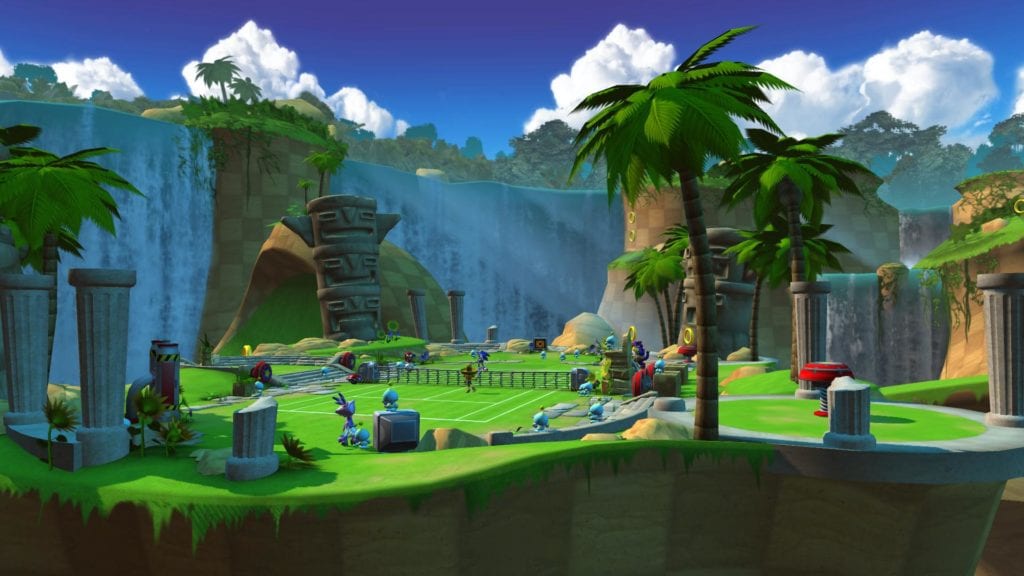
Mega Visions: How did this project begin? Was it SEGA’s idea, or Sumo’s?
Lycett: To understand this, first a little background. Sumo had worked with SEGA since our conversion of OutRun 2. That lead in turn to Virtua Tennis World Tour, OutRun 2006, and then Virtua Tennis 3. Towards the end of VT3, we’d got a big head cheat in and we had the sudden realization that Sonic could be a playable character with a little work…
The idea was floated, SEGA agreed and so SEGA Superstars Tennis was born as a result!
Here the basis of both Sonic & SEGA All-Stars Racing and Sonic & All-Stars Racing Transformed was laid. We’d pick from SEGA’s vast back catalogue for characters and stages and we’d try and be authentic to the original IP whilst making a game that felt very SEGA.
Take the core gameplay of Virtua Tennis mixed with blue skies and sunshine, and we’d have something that would be accessible to all ages. Helped to no end by the fact we were (and still are!) SEGA fans.
As soon as we finished SEGA Superstars Tennis, we sat down and agreed with SEGA to do a racing game next. Take what we’d learned from OutRun and apply a whole set of SEGA worlds and characters on top!
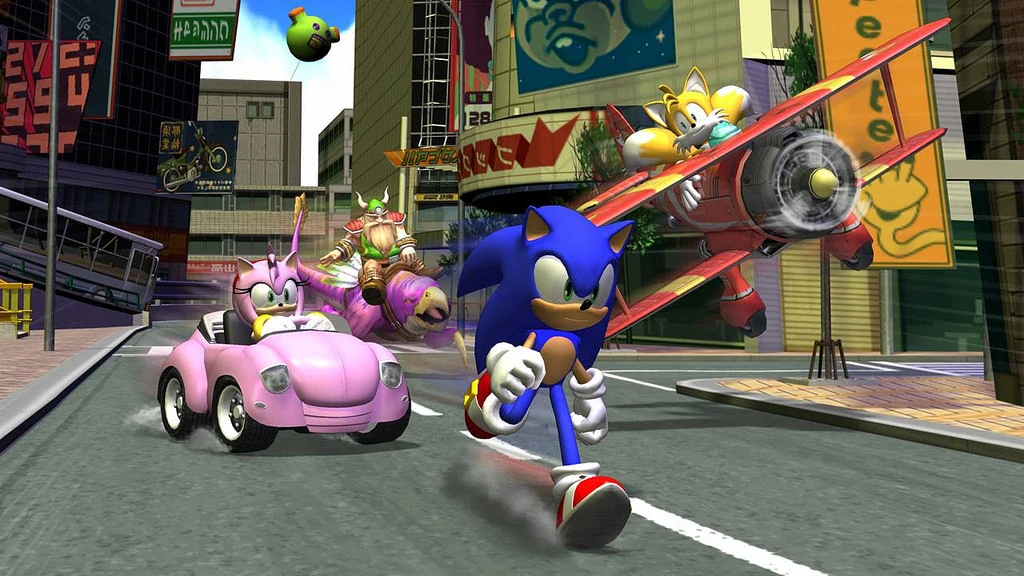
MV: Did it begin as SEGA All-Stars, or was it going to be Sonic?
Lycett: It was always going to be across all SEGA properties. Sonic is clearly an important franchise for SEGA, and for me at least, should always be represented. But we wanted to have a lot of diversity in terms of characters and themes and for that we wanted to be able to explore the wider possibilities other IPs offered.
In addition, you’ll note I said racing game, not driving game. Originally the plan was to have a mixture of methods of transport, so Sonic would be on foot, Beat would be on skates, Tails would be in a plane, and then we got really weird with Gilius Thunderhead riding a Chicken Leg enemy from Golden Axe!
There already, you can see we were mining ideas from the source games for not only characters, but their vehicles and forms of locomotion. So that was there and key from the start.
We ended up going back to more traditional vehicles as when we prototyped it, it kind of worked, but it was really unbalanced. Flying characters had a huge advantage, as they could cut corners with no penalty, on foot characters were too easily smashed out of the road by vehicles, and as we developed a car for Amy, we put in that classic OutRun style drifting and it was too good a mechanic to ignore. Everyone got cars (or bikes!), but of course that multi-vehicle play sat at the back of our minds before eventually blossoming into Racing Transformed…
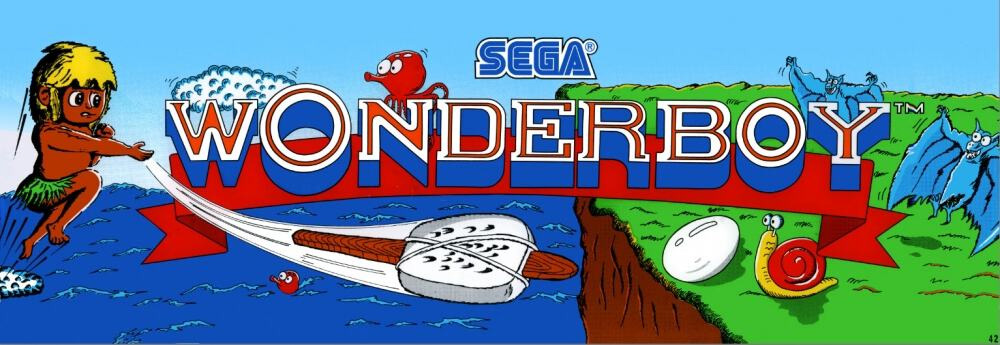
MV: How did character selection go? Were you given a list of characters SEGA wanted to have represented, or did you have an idea beforehand of who you wanted and ran it by SEGA?
Lycett: Originally, we created a list of characters we wanted to consider. I think the shortlist was well over 100 characters! That wasn’t just for racers, but also cameo characters, achievement images, etc.
First, it had a legal pass – did SEGA actually own the characters? For some of the older characters on our original list, there wasn’t always a straightforward answer…
Take Wonderboy. This was, of course, originally a SEGA arcade game. Indeed, there are conversions of this game and its sequels published by SEGA on both the Master System and Mega Drive/Genesis. But it was originally developed by Escape, who became Westone. There are also variations such as Adventure Island, developed by Hudson Soft on NES and PC Engine, starring Master Higgins. That’s before you consider the main character is also called Book or Tom-Tom depending on where you live, too…
On digging, it transpired SEGA did indeed own the trademark to the name “Wonderboy,” but it wasn’t clear cut who owned the character design. After all, they probably weren’t worrying about that way back in 1986, as they likely didn’t expect someone to need to prove it legally in 2008!
Now it’s possible we could have used Wonderboy, but as we had plenty of other characters that we could prove legally belonged to SEGA, in cases like this, we played it safe.
That was just the first rinse!
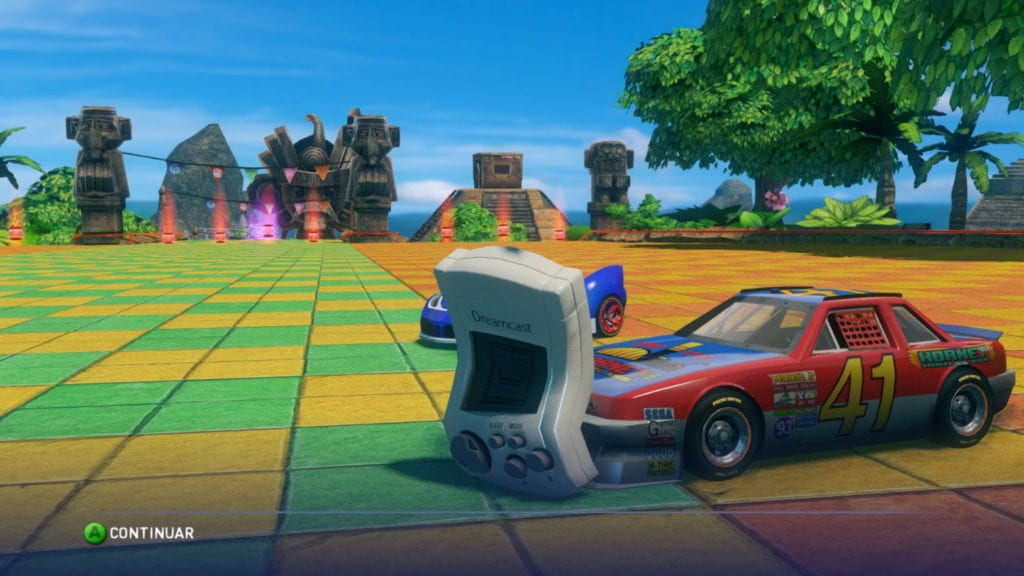
Next, we then wanted to get a good diverse set of characters. We wanted a good mix of male and female, as our goal was to make this accessible to the widest range of players possible.
We also wanted them to be characters we could animate and have fun with. There’d been a lot of suggestions to include the OutRun (Ferrari) Testarossa, the Daytona Hornet, or an After Burner jet, and whilst that did eventually lead to SEGA-Bot (aka AGES) in Racing Transformed, it was something we ruled out as we wanted to infuse each racer with character both in and out of a vehicle.
After this, we did concepts for vehicles, and we worked closely with the original creators at SEGA to make sure we could agree on a final design. This did lead to us again dropping a character in places, as we couldn’t get to a working design that adhered to some gameplay rules. To explain: If a vehicle was too big or too small, this provided game balance problems. Some characters could be made to work on a car or on a bike at the scales we needed, some couldn’t.
Eventually, we got down to a locked set of SEGA characters with agreed designs, and that’s pretty much the roster that you see in the final game!
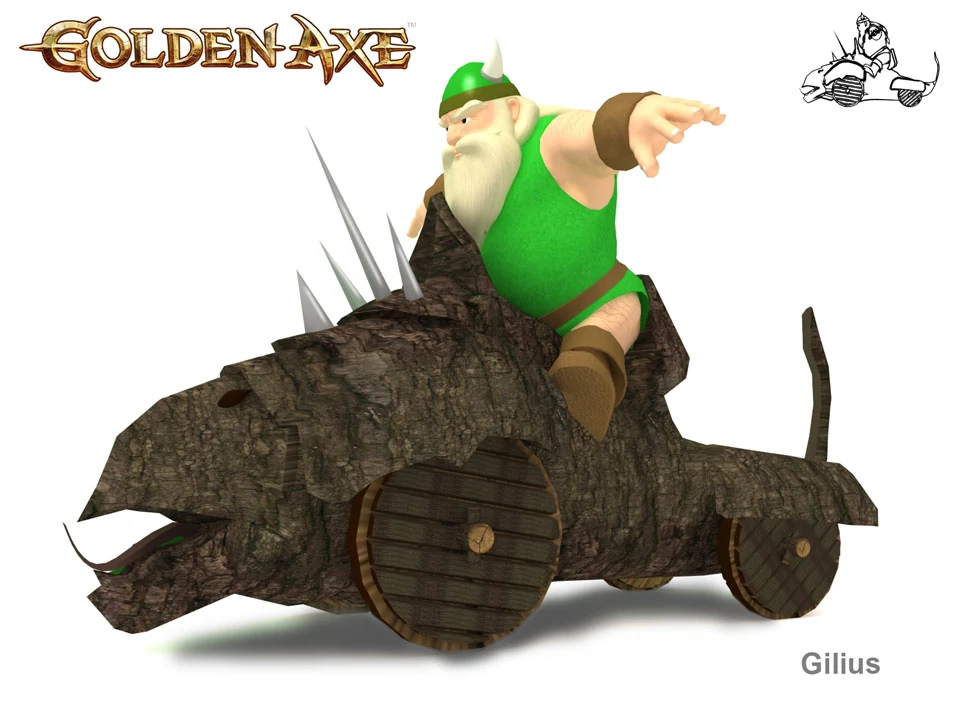
MV: I’m curious about two heavy hitters in particular who didn’t end up in the game but made the cut for the sequel: Golden Axe and Shinobi. Gilius was up for contention, but didn’t make the cut; what changed between this and Transformed that saw their inclusion in the latter?
Lycett: Generally, this was a side effect of the process. In Gilius Thunderhead’s case, once we opted to go to vehicles, we had some problems trying to design something that would fit in the required footprint; I think we had the idea of a chariot drawn by the Chicken Leg he would have previously ridden. We just couldn’t make it fit, so reluctantly, he went on the back burner. It helped that for the sequel, we had Golden Axe tracks and we’d then come up with a sort of Ray Harryhausen concept of riding various mechanical steeds!
Shinobi was again on the list for the first game. Here, I think originally, we’d wanted to include Joe Musashi, and the plan was to put him on a motorcycle. But as we locked the cast down and we’d selected Akira and Jacky from Virtua Fighter, we’d already gotten a good quota of martial artists.
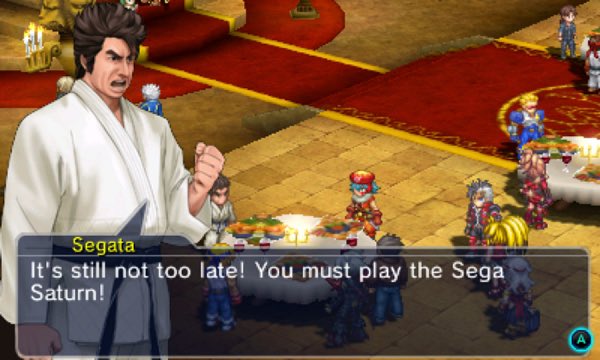
MV: At one point, a Segata Sanshiro riding a SEGA Saturn was under consideration. We saw him appear in Project X Zone 2 years later as a playable character, but was there any particular reason you can share for why he didn’t make the cut?
Lycett: We did again have him in the shortlist — I’m really not kidding when I say we’re SEGA fans! When we did the legal checks, we, of course, found out he’s played by real world Japanese actor Hiroshi Fujioka.
To include him as a playable character would require us to license his appearance so we could get the likeness right. At the time, I think the decision was it’d be too expensive, and whilst fans would recognize the character, we wanted to go with characters who’d also be interesting to people who weren’t necessarily hardcore SEGA fans. So sadly, he didn’t make the cut…
But… he is in Racing Transformed as a cheeky, brief cameo! If you’re in the lead on the final lap of the Race of Ages track, he’s diverting a rocket from SEGA HQ…! You can even see a SEGA Saturn strapped to his back as a homage to the original adverts.
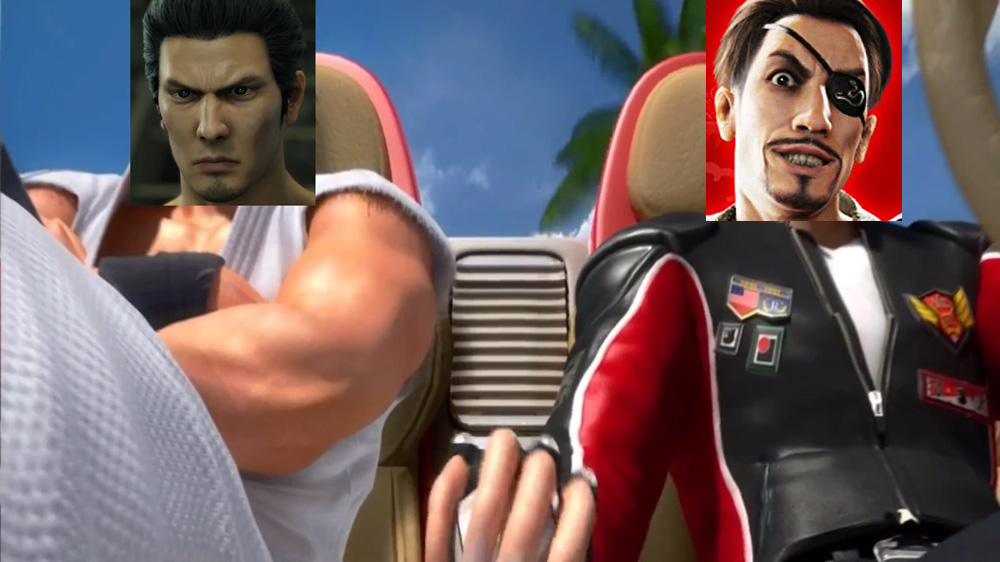
MV: Speaking of Project X Zone 2, Yakuza‘s Goro Majima and Kazuma Kiryu both made an appearance, despite the game’s T for Teen rating. As Zobio and Zobiko were able to get the M-rated House of the Dead in, was Yakuza ever up for consideration in some way? Maybe a Kamurocho track?
Lycett: Looking back now, I think having some kind of Yakuza representation, be that tracks or characters, was something we could have done. Certainly, both Kiryu and Majima did come up on the shortlist.
We’d opted to try and go with characters that would be suitable for a younger audience; for example, Bayonetta was also considered when we did Racing Transformed, but declined as we felt she was more suitable for an older audience.
Zobio and Zobiko worked as although House of the Dead is M-Rated, due to their more cartoon like nature, we felt they were a good fit into the bright and colorful character style.
I don’t know how many people picked up on the story that the HotD track in Racing Transformed was based around the idea that Zobio and Zobiko are getting married, hence the big party in the Curien Mansion. You can see them at the altar on the final lap.
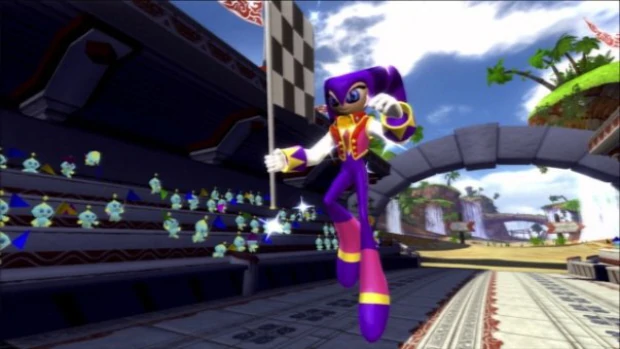
MV: As I recall, NiGHTS became the flag bearer after an impassioned push from the fan base. What was that process like on your end?
Lycett: Well … we had NiGHTS as a playable character in SEGA Superstars Tennis. When we went through the character process, we had trouble working out how to get them into a vehicle in a way that Iizuka-san was happy with. In the end, we just couldn’t get it to work in a way we were all happy with, so we opted to not include NiGHTS as racer.
This would have meant NiGHTS wasn’t represented within the game. Somehow, the NiGHTS community learned about this, and they started a campaign to ask SEGA and us to make sure NiGHTS wasn’t forgotten. They even threatened to burn their NiGHTS collection — not just the games, but all the other NiGHTS memorabilia they’d collected! It was worth well over £10,000!
At this stage, we were late in development, and it wasn’t going to be possible to add NiGHTS as a racer or a stage; we just didn’t have the time. In the end, I realized we could potentially get NiGHTS to be the flag bearer for both the start and end of the race.
With this in mind, we worked with Iizuka-san to take the character we’d used in SEGA Superstars Tennis, build a flag asset, a set of animations and do the required code to make it all work. We were literally weeks before being done, but we managed to get NiGHTS in there.
I got the approval to let them know, that avoided an unnecessary bonfire, and thus the role of flag bearer became official. We did get NiGHTS racers and tracks in for Transformed, which let the burden of flag bearer move to Ristar for the sequel!
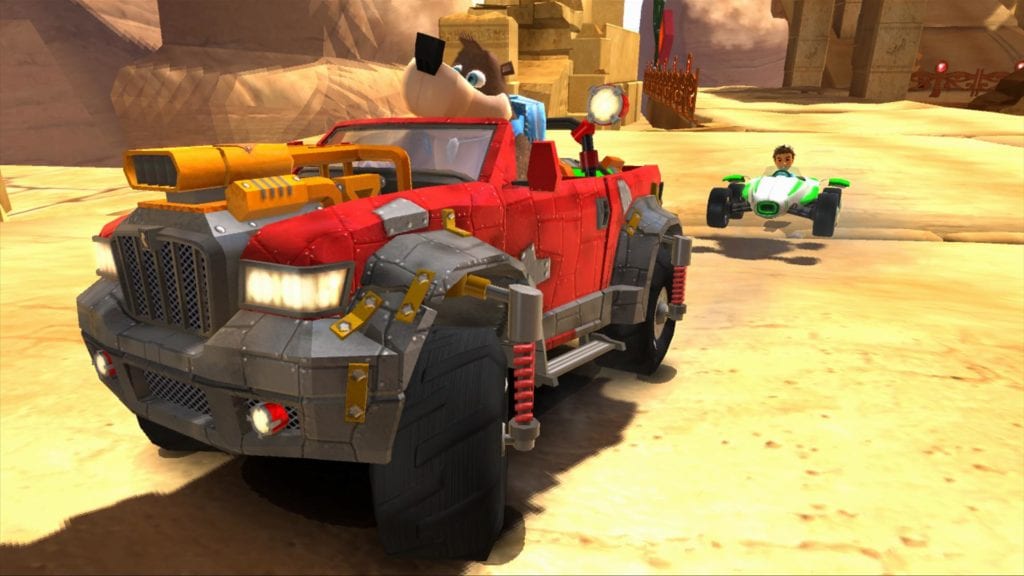
MV: How did Banjo-Kazooie end up as a bonus character?
Lycett: SEGA had been talking to Microsoft, and we’d been talking to Rare, as they’d developed the Avatars for Xbox 360. At some point, the suggestion came up from Microsoft, I think, to add in an extra character on the Xbox 360 version. Given we were already talking to Rare, Banjo and Kazooie felt like a natural fit.
We got the character assets from Rare (from Banjo-Kazooie: Nuts & Bolts) and worked with them to design a suitable vehicle. Note they weren’t the only Microsoft character we considered; at one point, we did a concept for Master Chief in a Warthog too…!
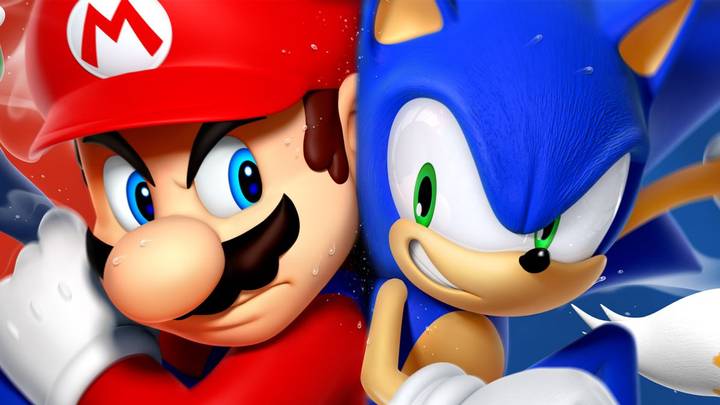
MV: Xbox got Banjo and Avatars. Nintendo got Miis, but there’s talk that Mario was under consideration, too, which would have balanced things between the two companies, but didn’t pan out. Can you elaborate on what happened there?
Lycett: Well, at the time, we did also talk to Sony to see if we could do a character there, too, with our first choice being Sackboy from LittleBigPlanet. Note this was before Sumo later went on to do LittleBigPlanet 3. Maybe if we’d have been working on that game at the time, that might have actually happened.
I believe SEGA had also looked into the possibility of including a Nintendo character for Wii, too. We’d have loved to include Mario — finally, a proper race between him and Sonic. In the end, it didn’t happen, of course, though I still wonder what a SEGA All-Stars VS Mario Kart game could be… (Awesome. Awesome is what it could be. –David)
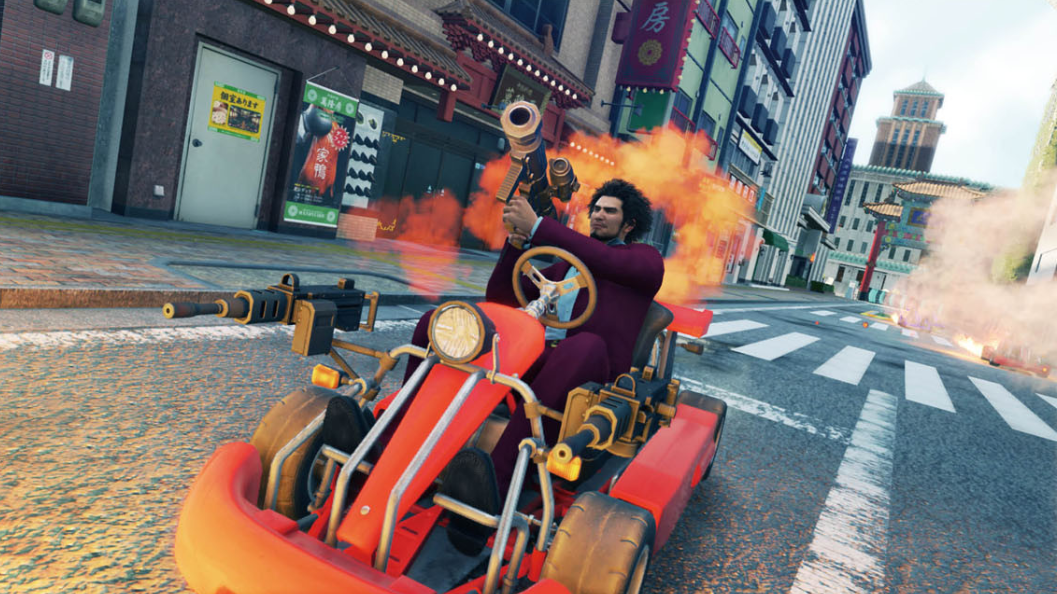
MV: Any characters or tracks you wish you’d gotten to include but didn’t?
Lycett: I think you might be getting a flavor of this, but we took notice of feedback from the SEGA community and reviews after SEGA Superstars Tennis and tried to address elements for All-Stars Racing. For example, we didn’t have online multiplayer on Wii for Tennis, but this is something we included for All-Stars Racing on Wii. Same with regards to cameo characters, music, game options and more.
We also took that feedback again when we started on Transformed, so each track was a unique IP VS multiple tracks themed across a set of IPs, and the cameo count rocketed.
I think at the end of the three games, we did a great job of trying to expand the range of IPs and characters included.
I’d have loved to have included more, but there is always a balance of how many things you can make based on how much time you’ve got.
Looking back, I think it would have been good to get Yakuza represented. We were also constantly asked for Hatsune Miku, which would have been a good fit. There was the infamous poll I suggested on the SEGA forums, which did directly lead to getting Ryo back in Transformed for PC. I would have loved to get that back into the console versions, but for reasons, it never quite happened.
MV: One mild criticism I’ve seen of the game is that it reuses recorded dialogue for the included characters, leading to some odd nonsequitors (for instance, Shadow saying “Who are you, and how do you know my name?” at the start of a race). Were there limitations which led to this, and if so, what was it like dealing with them?
Lycett: One of the challenges of having so many characters from so many games is making sure you’re authentic. Getting all the original actors and actresses back, especially for the older IP, was going to be complicated and time-consuming. So, we took the tack of delving into SEGA’s archives to track down [voice-overs] from the original games and seeing if we could find suitable samples to re-use. In most cases, it was pretty suitable, bar one or two lines. Where we couldn’t find voices, we either recorded new original lines or found other solutions. Hence SEGA-Bot’s emotes were recordings of Dreamcast UI sounds.
Most people don’t know that if you play as an Avatar or Mii, the voice actor for the male ones was me! That was a lot of fun to do!
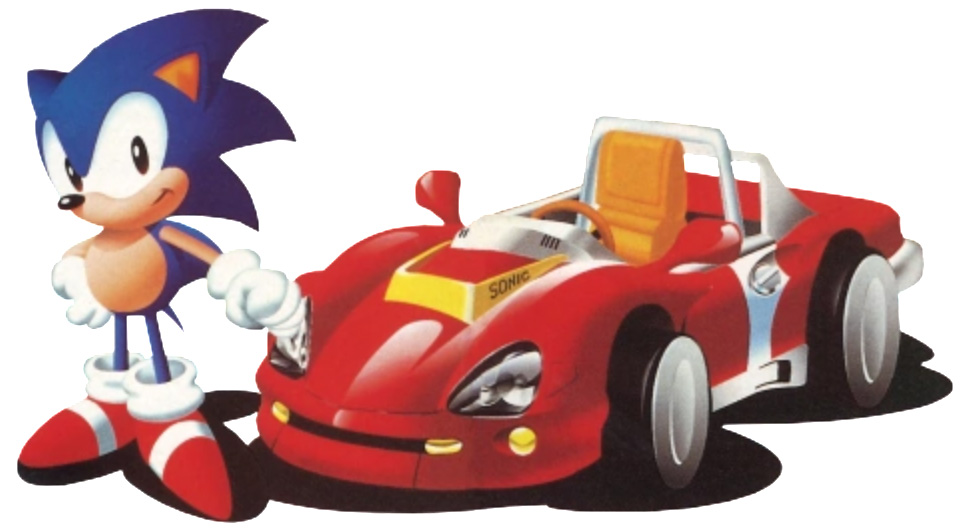
MV: ASR may be one of the greatest Sonic/SEGA racing games of all time (at least, in this writer’s opinion), but it wasn’t the first. Did the Sonic Drift games or Sonic R have any notable influence on what you were doing here?
Lycett: Musically, for certain – we got the excellent Richard Jacques involved in the series, as we loved the Sonic R music! As I said earlier, the original prototype had characters like Sonic on foot, just like Sonic R.
We did look at Sonic Drift, not least as there was a discussion on what color Sonic’s car should be, and the Sonic Drift car was red like Sonic’s sneakers. But that was about all we considered from those titles…
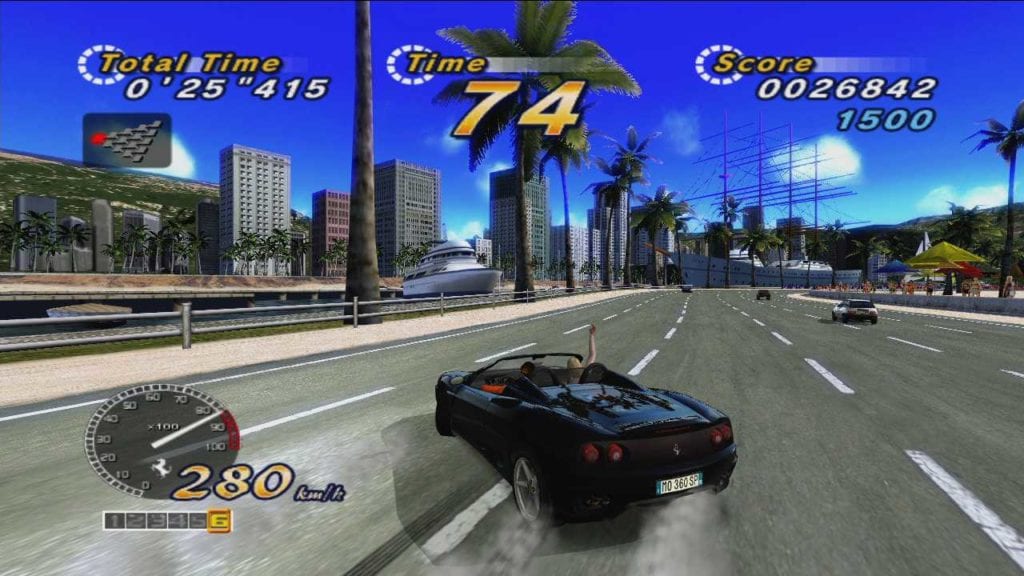
MV: What about other racing games?
Lycett: Like we say, the main inspiration came from OutRun, as we managed to get the drift emulated and then expanded that to charge-and-release boosts. Once we had that, along with the ability to do mid-air stunts, we felt the core racing was very SEGA. OutRun was inspiration enough!
MV: If I recall correctly from previous interviews, weapons were not originally a part of the game’s plan. What led to the decision to include them?
Lycett: They weren’t; originally, the plan was to be more of a pure racer. The weapons came along quite late. Originally, the All-Star Move was there to help players who had fallen to the back of the pack get back into the race. We had a charge bar that built based on various factors and had tuned this so it worked as a rubber-band mechanic as needed.
We’d actively avoided weapons, as we felt this would draw Mario Kart comparisons. In the end, following play tests, we discussed and agreed with SEGA that it would help balance the game, and thus we started on the weapons late on in development. With hindsight, it was the right choice, but I know it was pretty controversial when we first discussed it with the team.
MV: One of the more frequent criticisms of the game I’ve noticed is in the items, some of which act like items in Mario Kart (for instance, a projectile which bounces around until it hits an opponent like a green shell). But instead of representing an iconic item from a SEGA game, they are instead something more generic, like a boxing glove. What led to this approach with the items’ aesthetics?
Lycett: Mechanically, there are only so many ways you can implement weapons into a racing game. Especially if you have a rock, paper, scissor system where you have both attack and defense. So, you have a straight fire projectile, a homing projectile, a shield, a dropped attack, a boost, and so on. It didn’t help Mario Kart of course had these from pretty much the first incarnation.
As the weapons went in late on, we made sure they were all simple to understand and use. We had looked to see if we could theme the set around a given IP (like Sonic), but remember, these weapons had to be usable by a wider SEGA cast. So, we tried to look at form follows function, with simple, clear colors so you can read them on-screen quickly. And, well, the results are in-game.
For Transformed, we went through lots of iterations on weapons, as they were part of the game from the start – including all of them being Wisps at one point. I know they took that route with Team Sonic Racing, which made me smile!
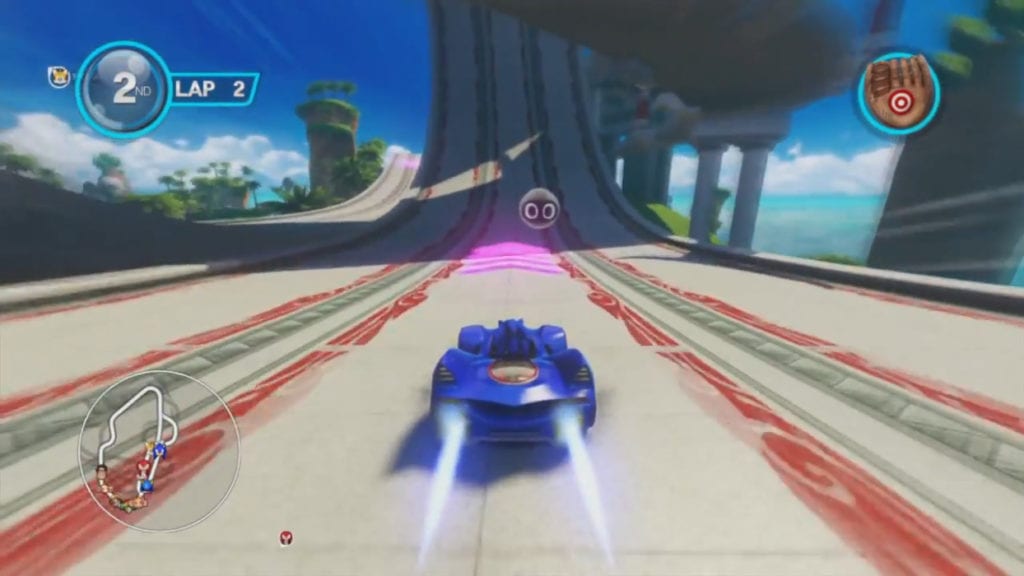
MV: If you could go back and replace one such item with something from a SEGA game, what would it be?
Lycett: Hard to say. I still like that we did the homing projectiles in Transformed as mini-RC versions of each racer’s vehicle. Loved that.
One change we did for the Japanese version of Transformed, which I thought was perfect, was swapping out the Blowfish for a Puyo. That was a suggestion from Okunari-san!
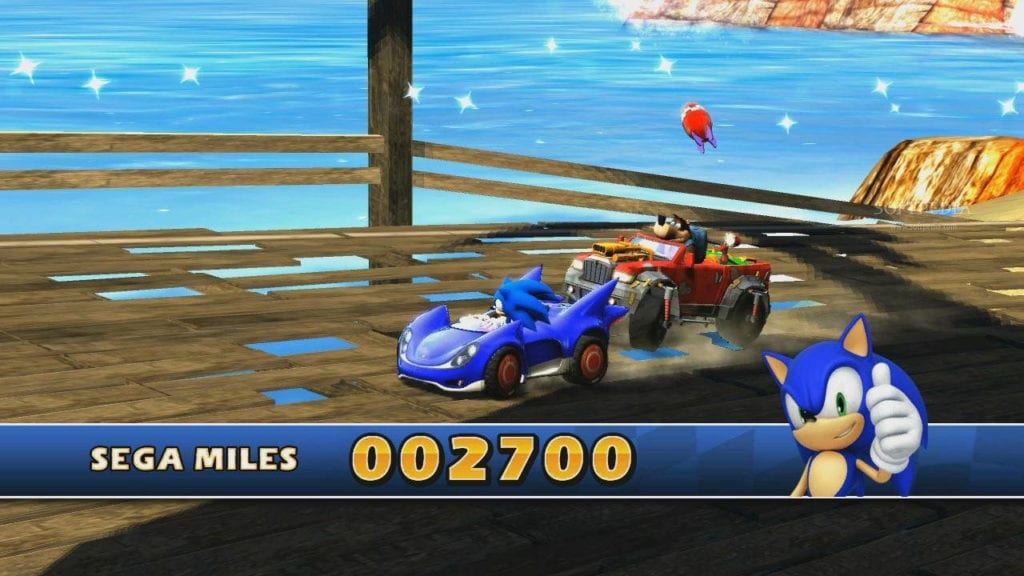
MV: One of my favorite parts of this game, versus other such racing games, is the SEGA Miles system. It’s extremely frustrating to not be able to unlock a character you really like on account of being blue-shelled as you’re about to cross the finish line, but here, you earn SEGA Miles by just playing the game. And while playing better earns you more with each race, if you don’t come in first, then at least you don’t feel like you’ve wasted your time and energy and are still on your way towards your next unlockable. What inspired this system?
Lycett: Originally, this was essentially an evolution of the system we had in OutRun 2006. The idea was that no matter your skill, each time you played the game you earned miles, and those miles could then be spent on the unlocks you wanted. So, if you wanted to save up miles and buy a new Racer, you could. Or you could buy new music, colors for the cars, etc. for a much smaller set of miles.
That was popular after OutRun 2006, so we brought it over into All-Stars Racing. It’s a nice system for younger players, for certain.
We didn’t do this for Transformed, mostly due to a change in design director, but also because we’d had criticism that it felt you never got a reward for working through specific content. So there, it’s more traditional instead. Though of course, then we got criticism for some of the unlocks, like SEGA-Bot being rather difficult to get. I think maybe it was a bit hard… but you live and learn!
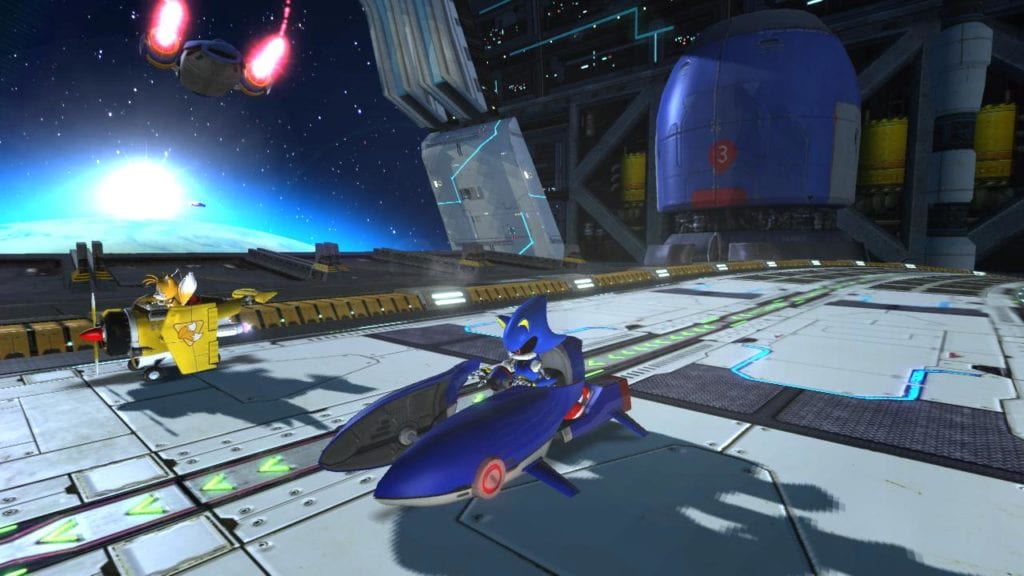
MV: Not everything was unlockable through SEGA Miles, though. What led to Metal Sonic and the Death Egg Hangar being the lone downloadable content (besides paying to unlock everything and a second Ryo Hazuke riding a forklift, that is)?
Lycett: Around that time, it was fashionable to have some DLC available. SEGA asked us to create an extra track and character, and asked us who we’d like to do.
We wanted to get Metal Sonic in and to have a track of a similar theme, so Death Egg was picked! All that content was done last so by that time we’d really understood how to make a fun track, and I think it’s one of the best ones in-game. Plus, of course, we also snuck in a Ristar cameo…
MV: Do you feel the game accomplished everything you set out to do with it?
Lycett: Bearing in mind this was our first original SEGA racing game, we were all pretty happy with it! Of course, there were ideas we wanted to explore, and characters and tracks we still had the itch to do, but that was OK as we pretty much started directly on Racing Transformed!
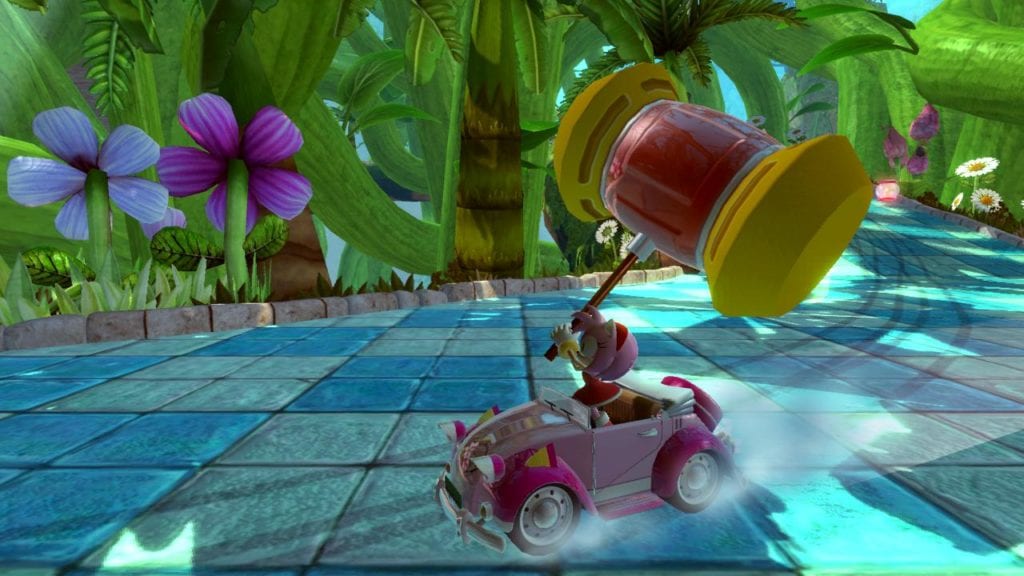
MV: With the benefit of hindsight, if there’s anything you could go back and do differently, what would it be?
Lycett: I think the only real change is making sure the All-Star Moves worked in a network game. We just couldn’t do it in time, and I think that was a real shame as even now, I watch videos of those and think we were crazy in what we did with them!
Maybe balance the bikes down to be a little less easy win. They’re hard to hit with weapons, and the wheelie boost was a bit overpowered. But that pleases my inner biker!
MV: What would you like to say to all the fans who have played and supported Sonic & SEGA All-Stars Racing these last ten years?
Lycett: I can only hope that everyone has had as much fun playing that game as we did making it. It was a real labor of love, and we very much embraced feedback from the community as we made it. I miss a lot of that interaction with the fans, especially in the forums. They helped drive us forward, as we could see the real love for those classic games and characters.
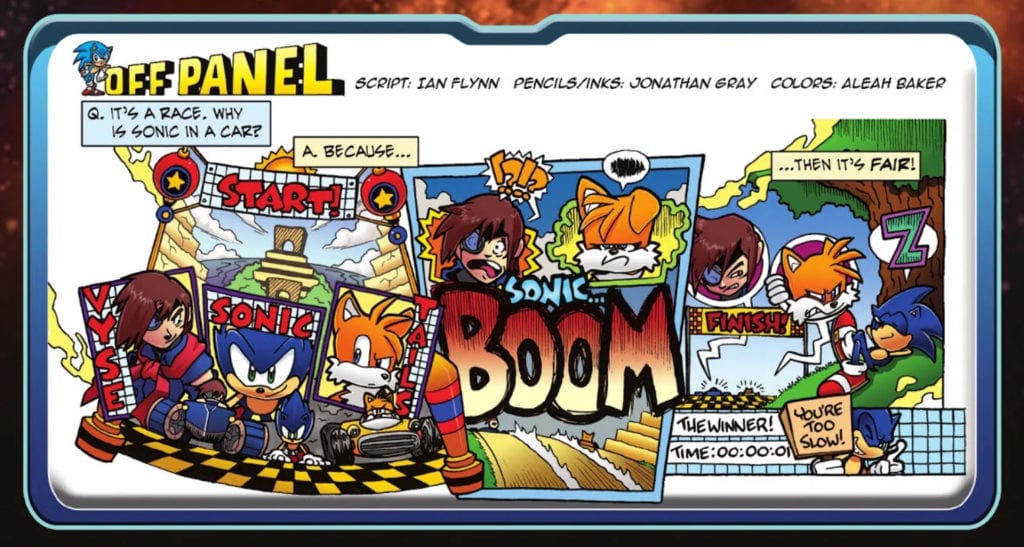
MV: Obligatory “Why is Sonic in a car?” question. (I always favored the “same reason you wouldn’t bring your car to a track meet” explanation.)
Lycett: You know, no-one ever asked me that before…
Kidding! The rules are that everyone uses a vehicle. It’d be unfair if Sonic was on foot, as he’d be unbeatable.
We would like to thank Steve Lycett, Sumo Digital, and SEGA for taking the time to celebrate with us by making this interview possible.


